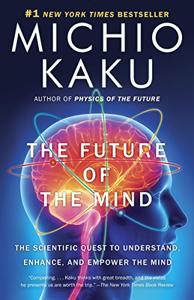
Want to learn the ideas in The Future of the Mind better than ever? Read the world’s #1 book summary of The Future of the Mind by Michio Kaku here.
Read a brief 1-Page Summary or watch video summaries curated by our expert team. Note: this book guide is not affiliated with or endorsed by the publisher or author, and we always encourage you to purchase and read the full book.
Video Summaries of The Future of the Mind
We’ve scoured the Internet for the very best videos on The Future of the Mind, from high-quality videos summaries to interviews or commentary by Michio Kaku.
1-Page Summary of The Future of the Mind
Overview
The universe is a big mystery, and it’s amazing to look at the stars. However, there are many mysteries in this world that we don’t know much about. One of them is the brain and how it works. It took us a long time to understand the brain because we didn’t have any tools for studying the brain until recently; however, now we can see what parts of our brains work by looking at images of them with machines called MRI machines or CAT scans (computerized axial tomography).
We’re just starting to understand how the brain works. However, we’ve already learned quite a bit about it. For example, we know that new neurological research and technology are going to be used to cure diseases and enhance our brains in the future. One example is that one half of your brain could believe in God while the other doesn’t believe in God at all. Another is that you’ll soon be able to upload memories online for others to see (and vice versa). Genetic modification has also created mice who can learn faster than normal mice.
Big Idea #1: The human brain comprises the brains of species that came before us in evolution.
Scientists have always been fascinated by the human brain and how it works. They used crude methods before modern techniques, such as dissection of the brains of people with brain damage to determine what parts are responsible for certain functions.
Scientists used to think that the brain was unchanging, but they later found out that it evolved from reptiles into mammals and then humans. This evolution is like layers of an onion being peeled off one at a time.
The human brain is divided into three parts. The first part, the reptilian brain in the center of our head, controls basic functions like breathing and the heartbeat. It also regulates instinctive behavior such as fighting or mating. On top of that is the limbic system, which allows for more complex social interactions and higher-order thinking skills. Finally, on top of all that is a big prefrontal cortex (the outer layer) behind our foreheads where rational thought takes place. This is what we use to make grand plans for tomorrow—like CEOs do!
As you can see, the human brain consists of remnants from species that came before us.
Big Idea #2: The brain is split into two hemispheres that have their own functions – and even personalities.
It’s widely known that the brain is split into two hemispheres, and each hemisphere has a specific function. For example, the left side of the brain controls muscles on the right side of your body, while vice versa.
The left hemisphere of the brain is responsible for language, whereas the right side contains areas responsible for spatial awareness. Moreover, the left side analyzes situations more thoroughly than the right side. The opposite is true when it comes to intuition and imagination; in this case, it’s better on the right side of the brain.
Although it may be oversimplified, recent research indicates that the two hemispheres of the brain have different personalities.
The left and right hemispheres in the brain can be isolated through surgery. Scientists have used this to communicate with each hemisphere individually, asking one side a question while the other side is distracted.
For example, one study showed that a split-brain patient was asked what he wanted to do after graduation. The left side of his brain said he wanted to be an engineer, while the right side said that he wanted to be a race car driver. Another study showed that when asked whether or not they were religious, the left hemisphere of their brain answered no; however, the other half said yes.





